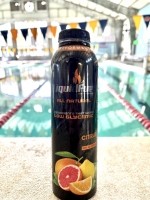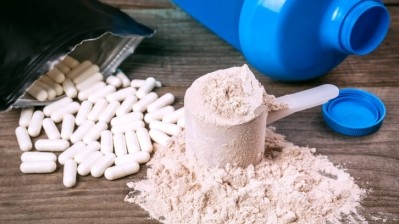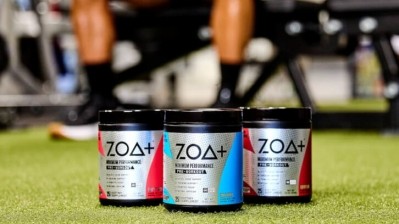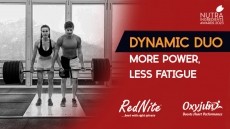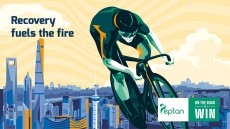Q&A: Liquid Fuel on finding its own sweet spot in the evolving sports hydration category

Piattoly, who worked as team nutritionist-dietitian for the NFL’s New Orleans Saints for eight years, the NBA’s New Orleans Pelicans for six years and for Tulane University Athletics for 14 years, explained that he came across a slow-release carbohydrate called isomaltulose at a trade show in 2014 and was immediately intrigued by the science behind the ingredient.
It wasn’t until 2017, when Coleman—a sports performance chef for professional athletes and food industry consultant—contacted him about developing a vitamin water that the idea for Liquid Fuel gelled. The brand launched a beta run last year to test what it calls a “Generation 3” product formulated specifically to provide a science-backed alternative to the high-glycemic products on the market. This year, Liquid Fuel is switching to a stick pack formulation and is prepping its relaunch.
Piattoly spoke to us about the Liquid Fuel’s journey so far, changing the way people think about sports and hydration beverages, and what led the brand to pivot to stick pack.
NIU: What motivated you to launch Liquid Fuel?
TP: We evaluated all the sports and hydration beverages on the market, and every brand had the same concept in that they were using simple/processed carbohydrates that elicit a quick spike in blood sugar (i.e., high glycemic, i.e., cane sugar, sugar, dextrose, etc.). Several of the brands use artificial sweeteners, artificial colors and dyes as well, which we didn’t want. We also noticed that these brands were either missing critical electrolytes to optimize muscle function/contraction or the formulas did not have the sufficient dosages required (i.e., too low in sodium, potassium, etc.).
We wanted to create a beverage that used a carbohydrate that was proven to keep blood sugar stable and was low glycemic, which is something that you don’t see in a ready to drink sports and hydration beverage. We also wanted to ensure the ingredients we use have been extensively studied. Isomaltulose is backed by a significant body of research in diabetics, which was exactly what we were looking for. If it can maintain stable glucose levels in diabetics, imagine what it could do for active individuals.
NIU: What sets Liquid Fuel apart from other sports and hydration formulas on the market? What science backs the ingredients in the formula?
TP: The carbohydrate we’re using is 100% low glycemic as it has a glycemic index of 29, which means it maintains steady blood sugar control without a spike and crash like the others that use carbohydrates with a glycemic index between 80-100. This is important not just for the athlete but also for the everyday individual or even diabetic who is a looking for a refreshing drink to keep blood sugar stable. It has been extensively studied in diabetics demonstrating blood glucose control after consumption compared to typical high glycemic carbohydrates.
A review of clinical trials with isomaltose shows the curves in blood sugar levels with 50-75 grams of sucrose vs. isomaltulose in healthy vs. diabetic subjects. You can see that diabetic subjects experienced a large spike in response to sucrose compared to the isomaltulose group, which had a 50% reduced peak glucose levels compared to the sucrose group.
Furthermore, in a study with high performance soccer athletes isomaltulose maintained higher blood glucose at 75-90 minutes of exercise and lessened the magnitude of exercise-induced rebound hypoglycemia, which is an important outcome to sustain endurance and energy throughout a match. Finally, isomaltulose has demonstrated a higher rate of fat oxidation during consumption, which means your body is utilizing fat stores more than carbohydrates. This can be an important for both the everyday individual and athlete.
For the electrolytes, we’ve included what we feel is a higher ratio of sodium to potassium than standard sports and hydration drinks since most either have too little sodium and potassium per serving or are very high in potassium with little to no sodium. We’ve added magnesium, a critical electrolyte for muscle contraction and function, which you don’t see in traditional sports and hydration beverages.
We also wanted to stay all natural so there are no artificial sweeteners, food colors, or dyes in our product. We use stevia and monk fruit for flavoring and beet powder as a coloring agent.
NIU: Who is your target consumer? How does liquid fuel meet high performance and everyday needs?
TP: We initially set out to focus on the athlete, especially the youth athlete market since parents are looking for better products to provide to their children to help create consistent energy and endurance throughout a tournament, game, or match. This is also the largest athlete market with over 60 million six- to 18-year-old kids.
Due to the versatility of the carbohydrate, we also wanted to create a product for everyday individuals who are looking for a science-backed product that they know will support their everyday needs. Whether they are working a job that requires a lot of physical effort, burns calories, and causes electrolyte loss (i.e., military, firefighter, construction worker, landscaper) or the everyday individual, Liquid Fuel can solve their needs.
NIU: What went into building and launching the brand? What was your path to market?
TP: We experienced our fair share of struggles with launching a brand, especially since we wanted to self-fund as much as possible without bringing in investors. In March 2020, we met with a dairy distribution business that loved the concept and purpose and wanted to dive into the athletic market as sole distributor for Liquid Fuel. The company laid out a five-year plan to grow Liquid Fuel to $300 million in revenue by year three, and we signed a letter of intent and began working on a long-term agreement. As COVID started to accelerate, the distributor struggled in its core business and had to back out of adding our product to its portfolio due to economic concerns.
In May of 2021, Kyle and I decided to self-fund a small pilot run of 500 units in two flavors (citrus and fruit punch) to sample with college and professional athletic programs, grocery stores, distributors, and potential investors. The beta testing with the Liquid Fuel RTD was very successful, but we are moving to a stick pack formula.
NIU: Why did you decide to pivot to stick pack? What lessons did you learn from the beta testing year with the liquid formulation?
TP: We learned a lot during the manufacturing of the liquid formulation and realized how competitive this market is with the brands, especially the big 3, that control much of the market space. We’re not trying to be them or compete with them as much as focus on the purpose on the product.
We spoke with a few large grocery store chains that said: “Hey, you have a great product, and we love the taste, BUT we can’t move shelf space because of the sales the big 3 generate”. What they did say was that if we moved to a stick pack formula, the opportunities are endless.
In discussions with several former executives with big liquid brands and over 50 high school team athletic trainers who handle the hydration and fueling of their athletes, they all also suggested we needed either a stick pack or powdered formula for convenience. The trainers told us that if we could create a better formula than what is on the market, they would be very interested.
It also takes much more time to manufacture liquid, and the volume that you have to produce can be intimidating to a startup. The combination of the opportunity identified with the stick pack format and the ease of production and manufacturing, not to mention the savings in shipping costs, is why we shifted our focus.
NIU: When do you plan to launch the stick pack? Will this be D2C or plans to launch in retail as well?
TP: We have the formula created and are currently in the process of selecting a manufacturer, with a target launch at the end of Q4 2023 but more likely Q1 2024.
We will sell D2C via e-commerce and work on a retail distribution model that leverages Kyle’s previous experience as global sourcing manager for Sprout’s Market and another partner’s expertise in the grocery business to launch in multiple retail outlets (grocery/club, c-store, drug, e-commerce, etc.).
We already have purchase orders from multiple high schools, colleges, and sports performance facilities. We also have a great relationship with a large distribution company that sells to every high school and collegiate program in the country and is interested in distributing our stick packs to those schools/programs.
NIU: What else is in store for Liquid Fuel? Do you have new products, plans or partnerships in the pipeline?
TP: We have seven other formulas created for different purposes and have ideas for using the carbohydrate in a variety of other spaces that we’re super excited about, but that will come after we get Liquid Fuel to a scalable and sustainable business.
My background as a sports dietitian in collegiate and professional sports will help us gain more traction in that space along with the high school market. We have strong relationships with high school athletic trainers along with business (sports performance facilities, high school teams, and online brands) that bring significant market awareness to the space.
We are also preparing to partner with individual athletes in the near future to bring more awareness to Liquid Fuel using various social media platforms and through NIL deals. We’ve seen the positive feedback on social media from athletes who have used and posted about Liquid Fuel (championship boxer Teofimo Lopez, collegiate swimmer Brennan Conner, LSU Football, University of Arizona Basketball).
NIU: How does Liquid Fuel view the future of the sports and hydration category?
TP: It’s ever evolving, and we know that consumers are incredibly intelligent but are still confused about what separates a product that can optimize health as well as enhance performance. We see new products coming into the market all the time, and it’s a little frustrating at times because we know the products having success are due to owner influence or good marketing. The new products are formulated with the same ingredients we’ve seen for the last 50 years. Outside of having pretty bottles and influence behind the product, we want to have a true purpose that is backed by science and can improve someone’s health and performance. We plan to bring innovation to the market as we look at ourselves as a Generation 3 product that will change the way people think about the purpose and functionality of a sports and hydration beverage.
NIU: What advice do you have for other startups in the industry?
TP: Keep pushing and plugging away at your ideas. We’ve been at this now for seven years. It’s not easy, and you will want to quit and give up because of the number of times you get turned down, but that only motivated us to continue.
We’ve met with some incredible people who have changed the landscape of the liquid business, and they were not only honest with us but gave us a lot of hope. We are both very proactive individuals who have built a lot of great relationships in the sports and beverage industry, which really helps expand interest. We meet with potential investors and partners on a weekly basis who are interested in Liquid Fuel, and we are very selective in who we want to work with and grow the brand to the next level. If you are passionate about the product that you have created, don’t let someone telling you “No” or that they’re “not interested at this time” distract your long-term vision and focus.


